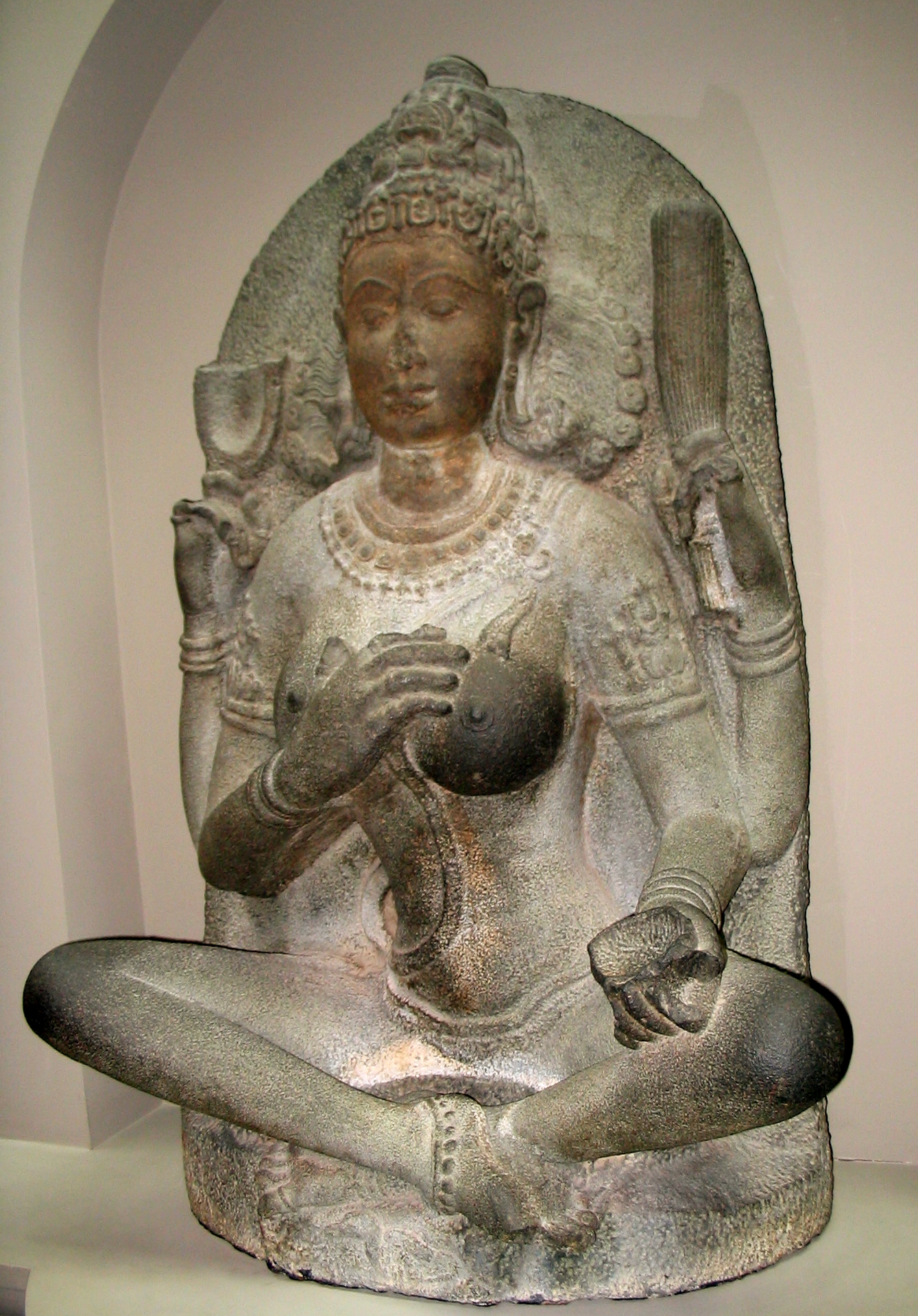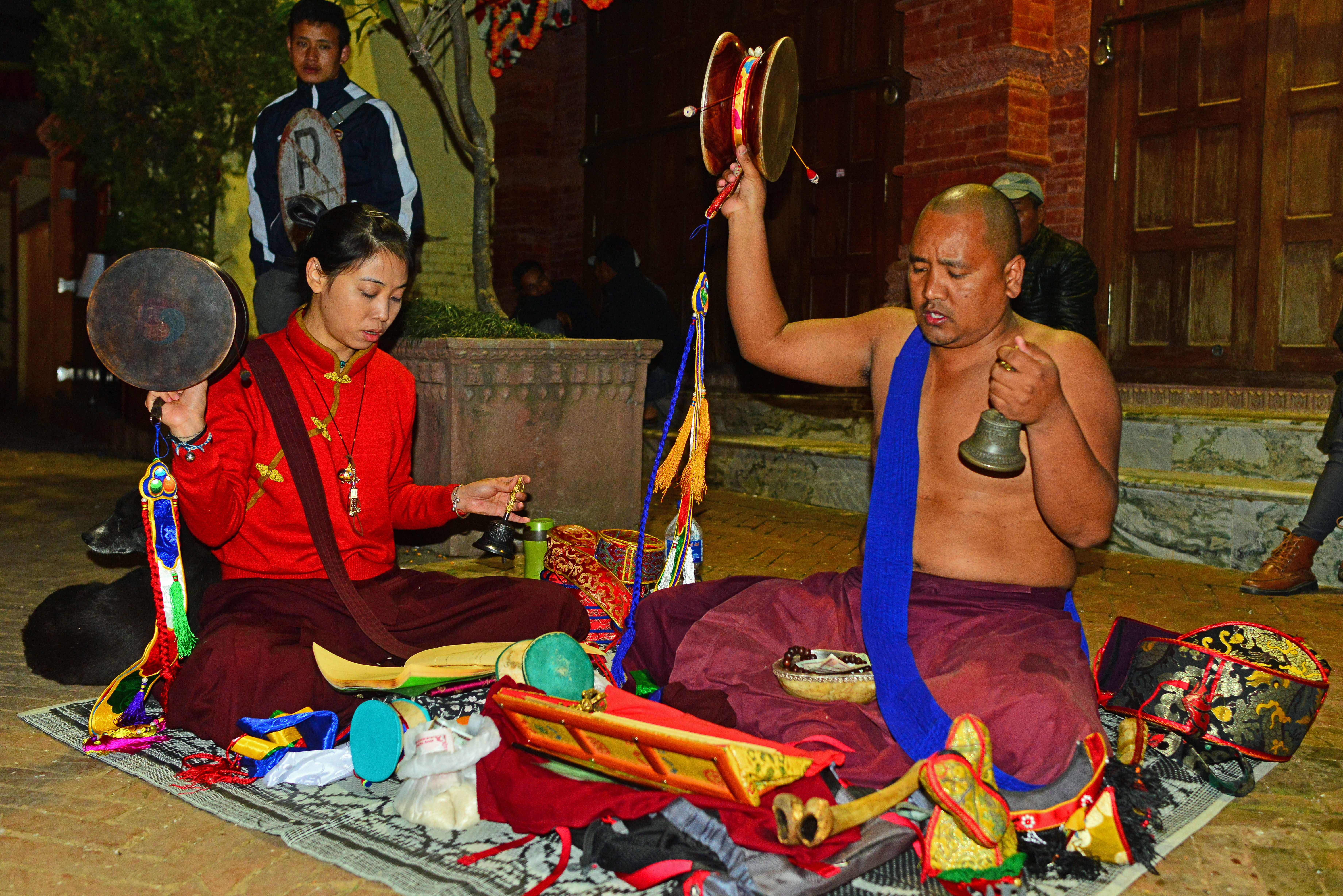|
Cursed Mountain
''Cursed Mountain'' is a 2009 action-adventure survival horror video game co-developed for the Wii by Sproing Interactive and Deep Silver Vienna, and published by Deep Silver. A Europe-exclusive port for Microsoft Windows was developed and released by Deep Silver in 2010. The story follows mountaineer Eric Simmons's trek up Chomolonzo to rescue his brother Frank, who unleashed hostile ghosts and monsters onto the surrounding lands. The gameplay, combining elements of survival horror and action-adventure, follows Eric as he ascends Chomolonzo, collecting items and fighting hostile ghosts. Including pre-production, development lasted over two years and was shared between multiple external studios; the team included industry veteran Bob Bates as script writer, and former Rockstar Vienna staff. The team wanted to create a game experience unlike others on the market, focusing on open environments and real-world folklore. Pre-production focused on researching Tibetan Buddhist fol ... [...More Info...] [...Related Items...] OR: [Wikipedia] [Google] [Baidu] |
Sproing Interactive
Sproing Interactive Media GmbH was an Austrian video game developer. It was founded in 2001 by Harald Riegler and Gerhard Seiler. Riegler and Seiler have owned and managed the company up to the present. The company has its headquarters in Vienna, Austria. Sproing has published over 50 titles of varying scope. The company produces games for different platforms such as Wii, Xbox 360, PlayStation 3, Personal Computer, PC, PlayStation 2, Xbox, Nintendo DS, PlayStation and Game Boy Advance. ''Panzer Tactics DS'' (released in 2008) was awarded the Deutscher Entwicklerpreis (German Developer Award) in the category ''Best German console-game''. For autumn 2012, a third game of the show ''Schlag den Raab'' was announced, as both predecessors sold over 250,000 copies between them on various platforms. In November 2016, the company, at the time with roughly 100 employees the largest game studio in Austria, filed for insolvency. It would later be succeeded by Purple Lamp Studios in 2018. The ... [...More Info...] [...Related Items...] OR: [Wikipedia] [Google] [Baidu] |
Wii Nunchuk
The Wii Remote, also known Colloquialism, colloquially as the Wiimote, is the primary game controller for Nintendo's Wii home video game console. An essential capability of the Wii Remote is its Motion controller, motion sensing capability, which allows the user to interact with and manipulate items on screen via motion sensing, gesture recognition, and pointing device, pointing which is used for the console, using accelerometer and image sensor, optical sensor technology. It is expandable by adding attachments. The attachment bundled with the Wii console is the #Nunchuk, Nunchuk, which complements the Wii Remote by providing functions similar to those in gamepad controllers. Some other attachments include the Classic Controller, Wii Zapper, and the #Wii Wheel, Wii Wheel, which has originally been used for the racing game, ''Mario Kart Wii''. The controller was revealed at both Electronic Entertainment Expo, E3 2005 and Electronic Entertainment Expo, E3 2006 and the Tokyo Game Sho ... [...More Info...] [...Related Items...] OR: [Wikipedia] [Google] [Baidu] |
Kora (pilgrimage)
__NOTOC__ Kora (, THL Simplified Phonetic Transcription: kor ra) is a transliteration of a Tibetan word that means "circumambulation" or "revolution". Kora is both a type of pilgrimage and a type of meditative practice in the Tibetan Buddhist or Bon traditions. A ''Kora'' is performed by the practitioner making a circumambulation around a sacred site or object, typically as a constituent part of a pilgrimage, ceremony, celebration or ritual. In broader terms, it is a term that is often used to refer to the entire pilgrimage experience in the Tibetan regions. Classification and foci For "pilgrimage", Tibetans generally use the term ''nékor'' (), "circling around an abode" (, THL: né), referring to the general practice of circumambulation as a way of relating to such places. In the context of kora, the ''né'' or ''néchen'' () is rendered as "empowered", "sacred" or "holy" place/object, and the ''né'' is credited with the ability to transform those that circumambulate it. Asp ... [...More Info...] [...Related Items...] OR: [Wikipedia] [Google] [Baidu] |
Nirvana
( , , ; sa, निर्वाण} ''nirvāṇa'' ; Pali: ''nibbāna''; Prakrit: ''ṇivvāṇa''; literally, "blown out", as in an oil lampRichard Gombrich, ''Theravada Buddhism: A Social History from Ancient Benāres to Modern Colombo.'' Routledge) is a concept in Indian religions (Buddhism, Hinduism, Jainism, and Sikhism) that represents the ultimate state of soteriological release, the liberation from duḥkha and '' saṃsāra''. In Indian religions, nirvana is synonymous with ''moksha'' and ''mukti''. All Indian religions assert it to be a state of perfect quietude, freedom, highest happiness as well as the liberation from attachment and worldly suffering and the ending of ''samsara'', the round of existence.Gavin Flood, ''Nirvana''. In: John Bowker (ed.), '' Oxford Dictionary of World Religions'' However, non-Buddhist and Buddhist traditions describe these terms for liberation differently. In Hindu philosophy, it is the union of or the realization of the identity of ... [...More Info...] [...Related Items...] OR: [Wikipedia] [Google] [Baidu] |
Bardo
In some schools of Buddhism, ''bardo'' ( xct, བར་དོ་ Wylie: ''bar do'') or ''antarābhava'' (Sanskrit, Chinese and Japanese: 中有, romanized in Chinese as ''zhōng yǒu'' and in Japanese as ''chū'u'') is an intermediate, transitional, or liminal state between death and rebirth. The concept arose soon after Gautama Buddha's death, with a number of earlier Buddhist schools accepting the existence of such an intermediate state, while other schools rejected it. The concept of ''antarābhava'', an intervening state between death and rebirth, was brought into Buddhism from the Vedic-Upanishadic (later Hindu) philosophical tradition. Later Buddhism expanded the bardo concept to six or more states of consciousness covering every stage of life and death. In Tibetan Buddhism, ''bardo'' is the central theme of the ''Bardo Thodol'' (literally ''Liberation Through Hearing During the Intermediate State''), the ''Tibetan Book of the Dead'', a text intended to both guide the recen ... [...More Info...] [...Related Items...] OR: [Wikipedia] [Google] [Baidu] |
Yogini
A yogini (Sanskrit: योगिनी, IAST: ) is a female master practitioner of tantra and yoga, as well as a formal term of respect for female Hindu or Buddhist spiritual teachers in Indian subcontinent, Southeast Asia and Greater Tibet. The term is the feminine Sanskrit word of the masculine ''yogi'', while the term "yogin" is used in neutral, masculine or feminine sense. A yogini, in some contexts, is the sacred feminine force made incarnate, as an aspect of Parvati, and revered in the yogini temples of India as the Sixty-four Yoginis. History The worship of yoginis began outside Vedic Religion, starting according to Vidya Dehejia with the cults of local village goddesses, the ''grama devatas''. Each one protects her village, sometimes giving specific benefits such as safety from the stings of scorpions. Gradually, through Tantra, these goddesses were grouped together into a number believed powerful, most often 64, and they became accepted as a valid part of Hinduism. ... [...More Info...] [...Related Items...] OR: [Wikipedia] [Google] [Baidu] |
Palden Lhamo
Palden Lhamo ("Glorious Goddess",Volkmann, Rosemarie: "Female Stereotypes in Tibetan Religion and Art: the Genetrix/Progenitress as the Exponent of the Underworld" ''in'' , sa, Śrīdēvī, mn, Ukin Tengri) or RematiDowman, Keith. (1988). ''The Power-Places of Central Tibet: The Pilgrim's Guide'', p. 260. Routledge & Kegan Paul Ltd., London. (pbk). are names of Shri Devi, a female tantric Buddhist deity who appears in dozens of different forms.https://www.himalayanart.org/search/set.cfm?setID=164 Shri Devi Main Page at Himalayan Art Resources She usually appears as a wrathful deity with a primary role as a dharmapala. She is specifically a Wisdom Protector, an enlightened being. Palden Lhamo is one of three Dharmapalas of the Gelug school of Tibetan Buddhism alongside Mahākāla and Yamantaka She is the wrathful deity considered to be the principal protectress of Bhutan. Palden Lhamo appears in the retinue of the Obstacle-Removing Mahākāla, either as an independent figure ... [...More Info...] [...Related Items...] OR: [Wikipedia] [Google] [Baidu] |
Chöd
Chöd ( lit. 'to sever') is a spiritual practice found primarily in the Yundrung Bön tradition as well as in the Nyingma and Kagyu schools of Tibetan Buddhism (where it is classed as Anuttarayoga Tantra). Also known as "cutting through the ego," the practices are based on the Prajñāpāramitā or "Perfection of Wisdom" sutras, which expound the "emptiness" concept of Buddhist philosophy. According to Mahayana Buddhists, emptiness is the ultimate wisdom of understanding that all things lack inherent existence. Chöd combines prajñāpāramitā philosophy with specific meditation methods and tantric ritual. The chod practitioner seeks to tap the power of fear through activities such as rituals set in graveyards, and visualisation of offering their bodies in a tantric feast in order to put their understanding of emptiness to the ultimate test. Definition and Sanskrit ''chedasādhanā'' both literally mean "cutting practice". In Standard Tibetan (the prestige dialect asso ... [...More Info...] [...Related Items...] OR: [Wikipedia] [Google] [Baidu] |
Terma (religion)
Terma (; "hidden treasure") are various forms of hidden teachings that are key to Vajrayana and Tibetan Buddhist and Bon spiritual traditions. In the Vajrayana Nyingma school tradition, two lineages occur: an oral ''kama'' lineage and a revealed ''terma'' lineage. Tradition holds that ''terma'' teachings were originally esoterically hidden by eighth-century Vajrayana masters Padmasambhava and Yeshe Tsogyal, to be discovered at auspicious times by treasure revealers known as tertöns. As such, terma represent a tradition of continuous revelation in Vajrayana and Tibetan Buddhism. Tradition Tradition holds that terma may be a physical object such as a text or ritual implement that is buried in the ground, hidden in a rock or crystal, secreted in a herb, or a tree, hidden in water, or hidden in the sky or in space. Though a literal understanding of ''terma'' is "hidden treasure", and sometimes refers to objects that are hidden away, the teachings associated should be understood as bei ... [...More Info...] [...Related Items...] OR: [Wikipedia] [Google] [Baidu] |
Himalayas
The Himalayas, or Himalaya (; ; ), is a mountain range in Asia, separating the plains of the Indian subcontinent from the Tibetan Plateau. The range has some of the planet's highest peaks, including the very highest, Mount Everest. Over 100 peaks exceeding in elevation lie in the Himalayas. By contrast, the highest peak outside Asia (Aconcagua, in the Andes) is tall. The Himalayas abut or cross five countries: Bhutan, India, Nepal, China, and Pakistan. The sovereignty of the range in the Kashmir region is disputed among India, Pakistan, and China. The Himalayan range is bordered on the northwest by the Karakoram and Hindu Kush ranges, on the north by the Tibetan Plateau, and on the south by the Indo-Gangetic Plain. Some of the world's major rivers, the Indus, the Ganges, and the Tsangpo–Brahmaputra, rise in the vicinity of the Himalayas, and their combined drainage basin is home to some 600 million people; 53 million people live in the Himalayas. The Himalayas have ... [...More Info...] [...Related Items...] OR: [Wikipedia] [Google] [Baidu] |
Tibet
Tibet (; ''Böd''; ) is a region in East Asia, covering much of the Tibetan Plateau and spanning about . It is the traditional homeland of the Tibetan people. Also resident on the plateau are some other ethnic groups such as Monpa people, Monpa, Tamang people, Tamang, Qiang people, Qiang, Sherpa people, Sherpa and Lhoba peoples and now also considerable numbers of Han Chinese and Hui people, Hui settlers. Since Annexation of Tibet by the People's Republic of China, 1951, the entire plateau has been under the administration of the People's Republic of China, a major portion in the Tibet Autonomous Region, and other portions in the Qinghai and Sichuan provinces. Tibet is the highest region on Earth, with an average elevation of . Located in the Himalayas, the highest elevation in Tibet is Mount Everest, Earth's highest mountain, rising 8,848.86 m (29,032 ft) above sea level. The Tibetan Empire emerged in the 7th century. At its height in the 9th century, the Tibet ... [...More Info...] [...Related Items...] OR: [Wikipedia] [Google] [Baidu] |
Quick Time Event
In video games, a quick time event (QTE) is a method of context-sensitive gameplay in which the player performs actions on the control device shortly after the appearance of an on-screen instruction/prompt. It allows for limited control of the game character during cut scenes or cinematic sequences in the game. Performing the wrong prompt, mistiming the action, or not performing any action at all results in the character's failure at their task, resulting in a death/failure animation and often an immediate game over or the loss of a life, with some games providing a lesser but significant penalty of sorts instead. The term "quick time event" is attributed to Yu Suzuki, director of the game ''Shenmue'' which used the QTE feature (then called "quick timer events") to a great degree. However, Roberta Williams's 1984 release of ''King's Quest I'' is considered the first game to include timed events in its gameplay. They allow for the game designer to create sequences of actions tha ... [...More Info...] [...Related Items...] OR: [Wikipedia] [Google] [Baidu] |









